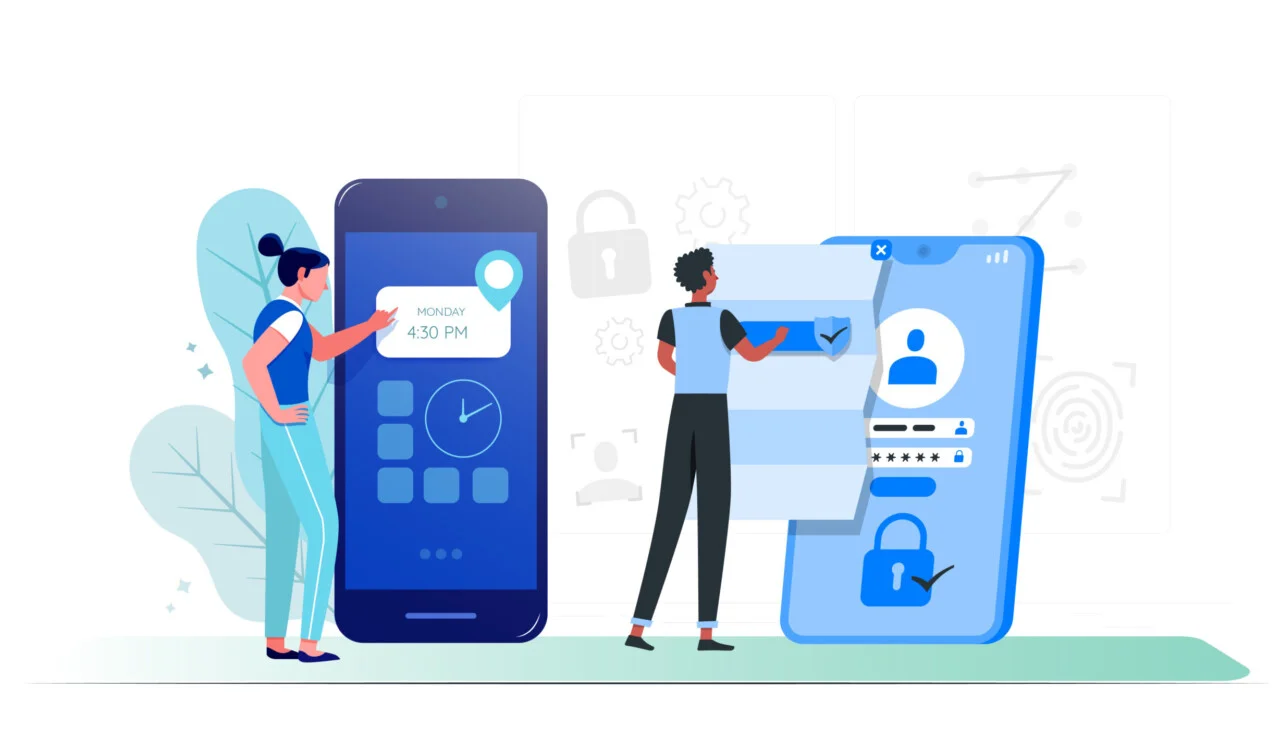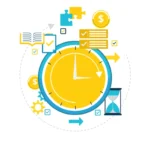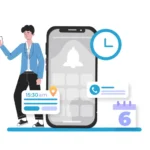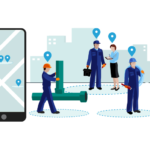Time tracking is a foundational element for effective management. Whether you use manual time sheets, or basic time clock apps, both come with a set of challenges. Both, basic time apps and manual timesheets are susceptible to issues of buddy punching and time theft due to shared shortcomings. Manual timesheets lack verification methods, making it easy for employees to manipulate records or allow others to punch in on their behalf.

Similarly, basic time apps may lack robust authentication and monitoring features, enabling unauthorized access or credential sharing. Advanced solutions, such as time tracking apps with an additional layer of security can mitigate the risks of buddy punching and time theft effectively.
Employers lose about 4.5 hours per week per employee to time theft, according to Robert Half International.
To address this, incorporating access control features, such as two-factor authentication in a clock in clock out app is a highly effective strategy. Implementing an additional security layer eliminates the possibility of time theft, streamlines time tracking, and ensures accurate payroll by preventing payment for hours not worked.
A robust time-tracking app enables efficient task monitoring for both office and remote teams, fostering productivity from any location. Managing payroll becomes effortless too with integrations that seamlessly align with the work you’re already engaged in.
Time clock apps help you see how tasks are distributed, find and fix any slowdowns, and improve the overall workflow. They also make it easier to keep track of project timelines, allowing you to make changes as needed to meet deadlines.
For every business, managing time and attendance for multiple employees throughout the year could result in substantial financial losses due to unearned payroll. The apps are transparent and encourage responsibility among team members. Apart from the knowing how long employees have worked, there are many other benefits of time tracking software.
The data points from the time clock apps help make smart decisions, improve productivity, and create a collaborative and efficient work environment.
What Are The Major Benefits of Using Time Clock Apps?
- Establishes Clear Objectives
Time tracking enables goal-setting by aligning team members with specific tasks for specific duration. This clarity reduces confusion about individual roles and responsibilities. - Boost Productivity
Utilizing an hours tracker app keeps teams focused on ongoing projects. You can identify potential challenges in day-to-day tasks and use insights to develop strategies for enhanced workplace productivity. - Efficient Project Management
Hours trackers offers visibility into task duration, aiding managers in better prioritizing future projects and optimizing team capacity for improved project management. - Enhance Transparency
Employee time tracking software automates hour logging, providing transparency into team members’ work. This transparency helps in holding team members accountable for their contributions. - Improve Progress Communication
Through time tracking, employees can communicate their ability to meet deadlines within regular work hours. This facilitates effective communication among team members and with managers.
While 2FA has been available for some time, it is now becoming a standard feature in cloud-based attendance software. This is an easy time clock login method with an enhanced layer of security. Let’s explore a few benefits of integrating this type of time clock software into your company.
Benefits of Using Time Clock Apps With Two-Factor Authentication
1. Reduced risk of unauthorized access
A two-factor authentication (2FA) system, particularly leveraging one-time passwords (OTPs), provides a security framework in time clock apps. In the standard login procedure, users conventionally supply their username and password as the primary authentication factor. However, the integration of 2FA introduces an additional layer of safeguarding by necessitating a second, dynamically changing element for verification.
In the absence of 2FA, if an employee’s credentials are somehow compromised, it could lead to unauthorized access posing a security risk. The implementation of 2FA with OTPs transforms this authentication process.
The app generates a unique OTP and dispatches it to her registered mobile number or email. The distinguishing feature of the OTP is its time sensitivity. This real-time verification mechanism mitigates the risk of unauthorized access and protects time-related data within the application.
2. Eliminates buddy punching
Time clock apps with an OTP-based 2FA system act as a deterrent against buddy punching. In a typical scenario without 2FA, an employee can easily share their login credentials with a co-worker who is running late or absent. This would allow the co-worker to log in on the absentee’s behalf, creating a false entry in the time tracking system.
However, with the use of OTPs in 2FA, the authentication process becomes tied to the individual employee. When an employee logs in, the time-sensitive OTP is sent to their registered device. This ensures that only the intended user, who has access to that specific device, can complete the login process.
This not only ensures accurate time tracking but also promotes a culture of accountability and trust within the workplace. The result is a more transparent and reliable clock in clock out app, that safeguards against fraudulent practices.
3. Compliance with security standards
Many industries and regulatory bodies recognize the importance of reinforcing digital security measures. As a result, they recommend or even mandate the implementation of 2FA for secure access to critical information. This recommendation is particularly important for industries dealing with sensitive data, such as healthcare.
By adopting 2FA in a time clock app, businesses demonstrate their commitment to maintaining a robust security posture.
Time clock apps often handle valuable employee data and payroll information. Incorporating a 2FA system helps your business align with these recommended security practices. Such systems add an extra layer of authentication beyond traditional username and password methods. The utilization of a second factor, such as a one-time password (OTP) significantly strengthens access controls, reducing the risk of unauthorized access and potential data breaches.
Conclusion
Incorporating employee time-tracking software with 2FA gives you an edge over your competitors as well as added security. This measure not only safeguards employee data but also eliminates the risk of buddy punching and time theft. Moreover, this easy time clock login method is hassle free- as it provides security without longer steps for clocking in.
For the majority of businesses, the optimal choice involves finding the perfect balance between security and usability. Furthermore, this advanced level of security aligns with best practices and industry standards, demonstrating a commitment to data protection and compliance with security regulations. As organizations increasingly face sophisticated cyber threats, integrating a time clock app with 2FA is a measure to mitigate the risks of any potential security breach.



